
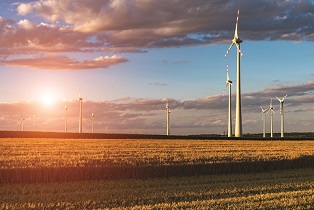 “We are in a race against time,” U.N. Secretary General Ban Ki-moon proclaimed darkly at the organization’s New York headquarters this past April. “The era of consumption without consequences is over.”
“We are in a race against time,” U.N. Secretary General Ban Ki-moon proclaimed darkly at the organization’s New York headquarters this past April. “The era of consumption without consequences is over.”
Mr. Ban’s words of warning, while decidedly gloomy, stood in stark contrast to the inherent optimism of the event they commemorated, which was the signing of the Paris climate accord by 175 countries from across the globe. Man-made climate change has long been a source of consternation for scientists, world leaders and average Joes alike. The tentative approval of the Paris Agreement is therefore a historic step, seeking to alleviate those fears through a series of voluntary commitments by nations to cut their greenhouse gas emissions. The United States has pledged to slash carbon emissions by 26-28 percent from their 2005 levels within the next 10 years.
This is a lofty goal, especially considering that the U.S. population has grown by 10 percent over the past decade, but it might not be as unattainable as it seems. Total domestic energy consumption has actually declined by 1.7 percent since 2005, and efforts to stem greenhouse gas emissions have been even more successful. Annual emissions of CO2 equivalents have fallen from 25.6 to 21.5 tons per person, resulting in a 6.9 percent decline in total emissions. Much of this reduction is attributable to the advent of hydraulic fracturing technology and the subsequent boom of U.S. natural gas operations. But there has been another significant and increasingly important factor in the rapidly shifting landscape of U.S. domestic energy: renewables.
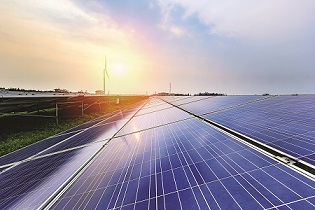 Overall, U.S. production of electricity from renewable sources has improved dramatically since the 1970s. Renewable generation capacity has more than doubled since 1973, and the market now accounts for one-tenth of all energy consumed annually in the United States. Of note, this growth was not brought about by increasing hydroelectric power, but rather by new technologies including modern wind and solar.
Overall, U.S. production of electricity from renewable sources has improved dramatically since the 1970s. Renewable generation capacity has more than doubled since 1973, and the market now accounts for one-tenth of all energy consumed annually in the United States. Of note, this growth was not brought about by increasing hydroelectric power, but rather by new technologies including modern wind and solar.
Alternative fuels and improved batteries have likewise begun to make an empirically limited but symbolically massive dent in the entrenched, internal combustion driven automobile market. While hybrid cars were incredibly rare at the turn of the millennium, in 2013 they accounted for more than three percent of U.S. market share. Fully electric vehicles are also making small but substantial inroads into the gasoline-dominated market and hydrogen fuel cells are following close on their heels.
Of course, supporting efforts of both the federal and state governments have proven influential in bringing about this change. But the market surge of renewables is not merely artificial bloat; improved technology has gone a long way toward solidifying the industry’s viability. Consider photovoltaic power. The pioneering solar cells of the 1970s struggled to break the 10 percent efficiency mark. Nowadays, modern panels routinely exceed 20 percent efficiency, and cutting-edge research has produced cells with 40 percent efficiency.
Shifting consumer preferences have also helped reshape the market. Recent environmental, social and economic trends have conspired to make the popular demand for clean energy and cleaner cars greater than ever. One need look no further than Elon Musk’s Tesla Motors to see this phenomenon in action. After the March 31st unveiling of its “Model 3” concept, the electronic automaker received over 100,000 deposits to secure one of the cars — which won’t even hit the market for at least another year.
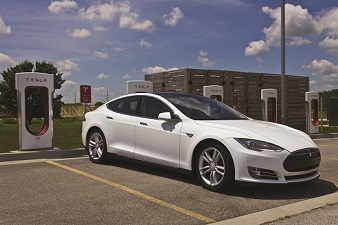
As helpful as current conditions are, however, they are not a free pass to make expansion decisions on a whim. The past decade witnessed no shortage of bankruptcies and stock crashes among renewable energy companies that failed to thrive in the modern economy. These industries are hardly immune to market volatility and great care must be taken to ensure such endeavors are given the greatest possible chance at success. As these fields continue to play a greater role in the U.S. economy, site location professionals should consider the following.
Geographic Considerations
While the right location is essential for any business, geographic considerations, particularly weather patterns, are especially important to renewable energy endeavors. The somewhat unfortunate reality is that most renewable technologies currently seen as economically viable depend heavily on such natural factors. Generally speaking, wind turbines need average winds of at least 7.5 meters per second to function optimally, solar (rather obviously) does better in sunnier regions and geothermal energy is dependent on complex geological factors. Now researchers and manufacturers don’t necessarily need to tie themselves to these geographical factors. However, good R&D efforts should plan for extensive field testing and it makes a certain economic sense to at least consider producing goods near the target market.
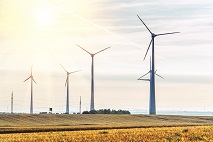 Fortunately for all parties involved, the government’s National Renewable Energy Laboratory (NREL) has already done the heavy lifting for most of this research. A simple search of the NREL website will reveal a series of easy-to-read heat maps that lay out the natural endowment of renewable resources across the country. In short, wind is best utilized in the Central Plains, the Midwest and much of both seaboards. Solar is strong in the South and West and blazing in the Southwestern deserts, and geothermal efforts are best kept west of the Mississippi. Really, the only regions with no great renewable options are inland Mid-Atlantic and Northeastern states.
Fortunately for all parties involved, the government’s National Renewable Energy Laboratory (NREL) has already done the heavy lifting for most of this research. A simple search of the NREL website will reveal a series of easy-to-read heat maps that lay out the natural endowment of renewable resources across the country. In short, wind is best utilized in the Central Plains, the Midwest and much of both seaboards. Solar is strong in the South and West and blazing in the Southwestern deserts, and geothermal efforts are best kept west of the Mississippi. Really, the only regions with no great renewable options are inland Mid-Atlantic and Northeastern states.
Another important geographic consideration is the presence of a robust logistics infrastructure. While not vital to R&D per se, manufacturing operations depend heavily on access to strong supply chains. In fact, unlocking the full potential of green energy might not depend on technology as much as logistics. At least that’s one of the key concepts behind Tesla’s New Mexico “Gigafactory.”
It is widely believed that better storage is crucial for the country’s energy future, thus making renewables less dependent on inconsistent weather patterns and improving the market potential for electric vehicles. With the science behind batteries being notoriously difficult, the necessary gains to storage capacity will need to come from cutting costs. This is the reality underlying Tesla’s decision to invest in the massive, 5-10 million square-foot factory. By leveraging economies of scale and consolidating a currently global manufacturing operation, Tesla hopes will be able to reduce the cost of producing high-efficiency batteries by up to 70 percent The Gigafactory is an extreme example for sure, but it does serve to illustrate how logistical factors can be as important as any in deciding where to locate a green energy project.
Finding Skilled Labor
Renewable energy and alternative fuels are inherently high-skill fields. Successful R&D is essentially predicated on an advanced degree in physics, chemistry or some other hard-STEM field, and mass producing these goods requires a certain level of sophistication that easily puts it in the advanced manufacturing category. As such, access to an appropriate workforce must be factored into the decision-making process.
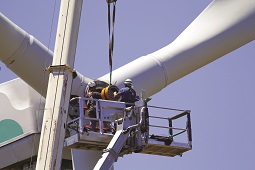 On the research side of things, universities continue to serve as an excellent foundation for talent pools. Many of the leaders in cutting-edge green energy research are the usual suspects — MIT, UT Austin, the University of California system — but there are some sleeper picks in the field as well. The Oregon Institute of Technology has pioneered the four-year degree in Renewable Energy Engineering and Iowa State University’s Biochemical Institute seeks to leverage the state’s agriculture to produce sustainable fuel and energy sources.
On the research side of things, universities continue to serve as an excellent foundation for talent pools. Many of the leaders in cutting-edge green energy research are the usual suspects — MIT, UT Austin, the University of California system — but there are some sleeper picks in the field as well. The Oregon Institute of Technology has pioneered the four-year degree in Renewable Energy Engineering and Iowa State University’s Biochemical Institute seeks to leverage the state’s agriculture to produce sustainable fuel and energy sources.
According to the Harvard Cluster Mapping Project, the broader Eastern Iowa-Chicago-Northern Indiana corridor is also a hotbed of labor specialization in the alternative energy field, mirroring the region’s success in the highly technical medical device industry. Similar specialization clusters can be found in the Charlotte/Augusta region and Eastern Pennsylvania, as well as more unexpected locales such as Little Rock, Arkansas, and Miami, Florida. Many of these regions come with the additional advantage of strong logistics and manufacturing clusters, making them prime candidates for multi-faceted green energy operations.
Incentives/Cost Factors
Last December’s permanent extension of the Federal R&D Tax Credit no doubt comes as welcome news to many in the research-heavy renewable energy and alternative fuel fields. In the years since the Federal law’s initial passage, many states have jumped on the R&D credit bandwagon; the most recent analysis by the Tax Foundation indicates over 40 states have such provisions on the book. Not all tax credits are made equal, though. Chief Executive praised Minnesota and Louisiana’s R&D incentive programs, largely because their “refundable” structure made them particularly useful to small businesses. Iowa, Virginia and Arizona were also lauded for their similar, albeit more limited programs.
State and local policies and incentive packages tailored specifically toward green energy have also become increasingly popular as of recently. Pretty much every state has at least some such laws on the books, but there are a few standouts. North Carolina and New York both provide robust support, Texas and Minnesota have over 100 policies each and the three West Coast states have an incredible 389 split between them. Such measures, which range from broad state-level energy efficiency rebates to the discretely narrow “Made in Minnesota” thermal solar rebate, have significant implications for both the supply and demand side of the green energy production function and should not be ignored. Luckily again, site location professionals need not start from scratch. “DSIRE,” a collaborative effort between the U.S. Department of Energy, NC State University and the North Carolina Clean Energy Technology Center, provides a brief synopsis of each of the literally thousands of policies currently in existence.
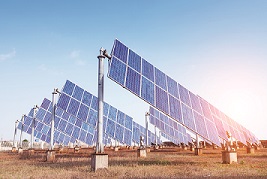 But again, as useful as incentives can be, they are only a small slice of the bigger picture. Other costs, including land, wages, taxes and utilities, can be more important than incentives. Consider California, for instance. The state is supportive of alternative energy and is widely considered the tech hub. On the other hand, it ranks terribly for its business tax climate, labor costs are above average and real estate can be prohibitively expensive, especially near Silicon Valley.
But again, as useful as incentives can be, they are only a small slice of the bigger picture. Other costs, including land, wages, taxes and utilities, can be more important than incentives. Consider California, for instance. The state is supportive of alternative energy and is widely considered the tech hub. On the other hand, it ranks terribly for its business tax climate, labor costs are above average and real estate can be prohibitively expensive, especially near Silicon Valley.
The Politics
For better or for worse, alternative energy technology is rocking the boat of a century-old industry and the resulting economic disruptions have created some political tensions. Perhaps nowhere exemplifies this more than Texas. The Lone Star State has actually been fairly successful in incorporating wind power into its grid, but it also a large hub for the oil and gas industry. Somewhat predictably, the state’s 2015 legislative session saw an effort to repeal portions of its renewable energy portfolio, much to the chagrin of both environmentalists and clean energy providers. While the proposal ultimately stalled out in the legislature’s lower house, it demonstrates how shifting political tides can change the prognosis of a project almost overnight. Site selectors would be wise to keep an eye on local politics as they contemplate how to proceed with certain projects.
Conclusion
Obviously, there is no one-size-fits-all locale for every renewable energy/alternative fuel project. Each of these endeavors varies in purpose, scope, workforce needs and countless other variables that must be accounted for. What they all have in common, though, is far more important than their individual differences: they all represent the future. The interest in green energy has never been greater, and there is no shortage of resources to help site location professionals make the right choice. More important, there’s no reason this vital new industry can’t be a boon to businesses, communities, the broader national economy and, of course, site selectors.

